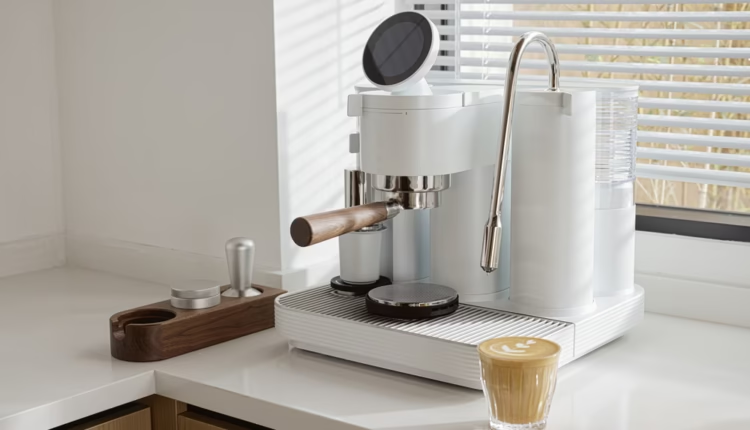Test Drive: Meraki Tech x TIMEMORE Home Espresso Machine
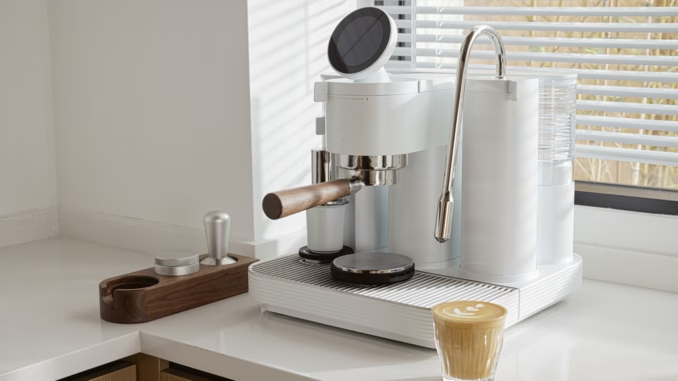
With a built-in coffee grinder, scale, and temperature-sensitive steam wand, Meraki’s home espresso machine seeks to do it all. Join us as we put it to the test.
BY EMILY JOY MENESES
ONLINE EDITOR
Featured image courtesy of Meraki Tech
Based in Hong Kong, Meraki is a bit of a fresh face in the specialty-coffee world, having first introduced their espresso machine just recently in 2024. And yet, the equipment startup has already managed to garner a ton of buzz around their machine, raising nearly $2 million USD from over 2,000 supporters via their Kickstarter and Indiegogo campaigns in the span of a few months.


But what’s the hype all about? Beyond its sleek, modern design, Meraki’s espresso machine is appealing for a number of reasons—mostly because it, well, kind of does it all. While coffee nerds have traditionally been used to accumulating loads of equipment for different purposes—grinders, scales, milk thermometers, and the coffee brewers themselves—the Meraki espresso machine has pretty much everything you’ll need to brew quality espresso, all in one device.
One Machine, Multiple Capabilities
First, the machine features a coffee grinder, which the startup co-engineered with Singapore-based TIMEMORE. Second, it includes a built-in scale, allowing you to precisely weigh out both your starting dose and your ending espresso shot.
The machine’s steam wand also includes sensors that measure temperature and froth levels, making milk steaming easier than ever. And, last but not least, the machine’s intuitive touchscreen interface comes with built-in recipes and brewing tips, making the device incredibly beginner-friendly.
Oh, and the machine even comes with some helpful extra tools, including a milk pitcher, tamper, coffee distributor, and a pretty sleek-looking wooden tamping station. As someone who sometimes gets overwhelmed with how much the cost of coffee gear can add up, it was honestly refreshing to have everything needed to make espresso in one package.
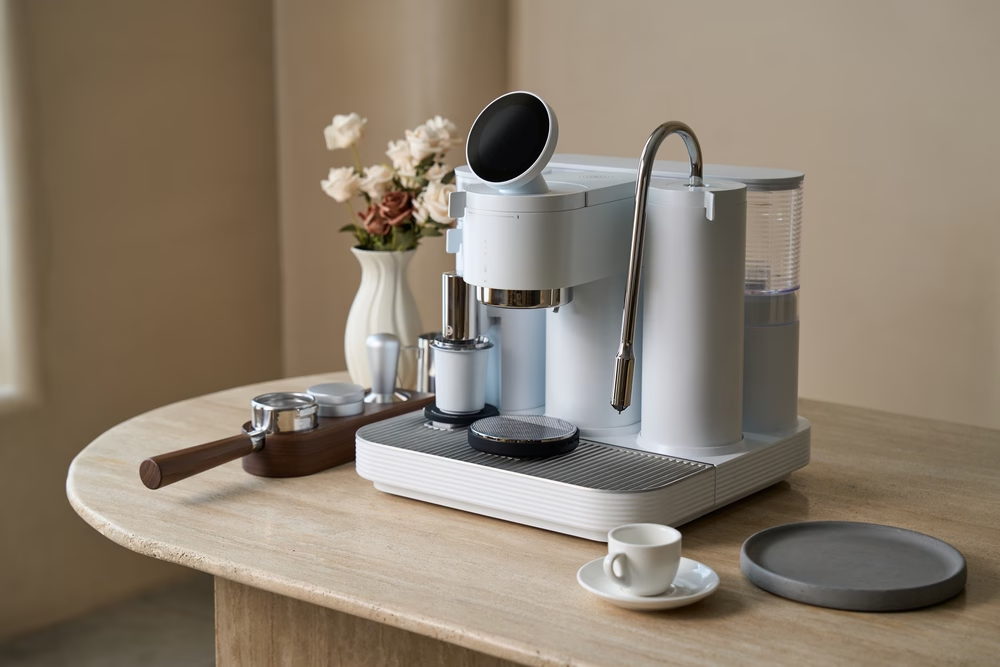

Behind the Design: Built for Beginners and Experts Alike
While the espresso machine does make an effort to keep things easy for those without barista experience, it still has a lot of the features that the seasoned coffee enthusiast would look for, offering both manual and automatic options that allow you to take control (or sit back) as much as you’d like.
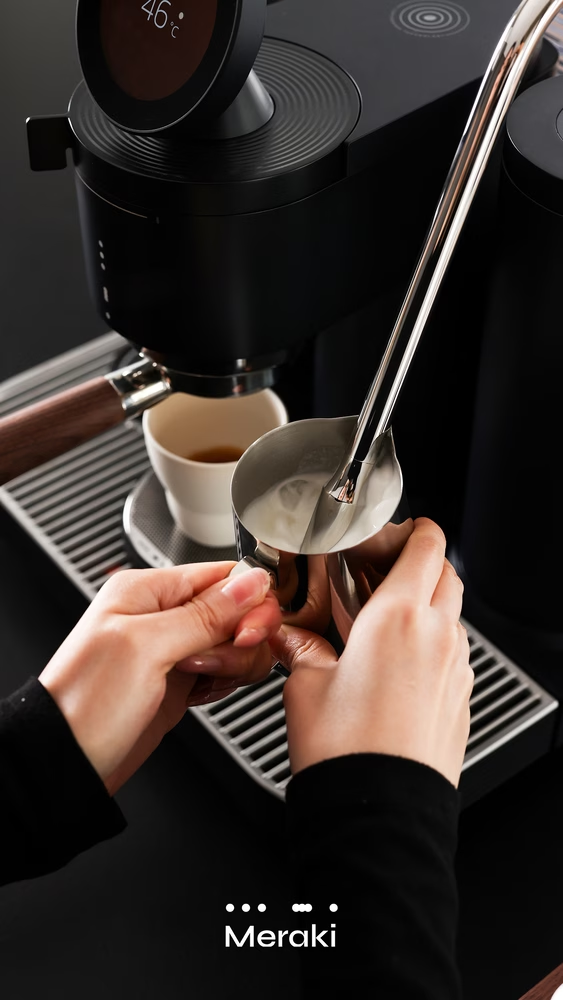

Meraki CEO Dennis Chen shares that the startup’s espresso machine, which has attracted a lot of attention for its futuristic design, was influenced by his time working as an engineer at Dyson: a brand long-known for creating products that are both stylish and functional.
“My journey to create this espresso machine began with over a decade as an engineer in the high-end home appliance industry, including a significant period at Dyson,“ Dennis says. “Dyson’s philosophy—that innovation and engineering can solve problems others ignore—deeply shaped my approach.“
“As an SCA-certified professional barista and passionate coffee enthusiast, I recognized a major gap: There were no home espresso machines truly suited for most ordinary people,“ Dennis continues. “They wanted high-quality espresso but lacked the time or deep coffee-making knowledge. This became the foundation for my company. … We may be new, but our dedication is 100% unwavering.“
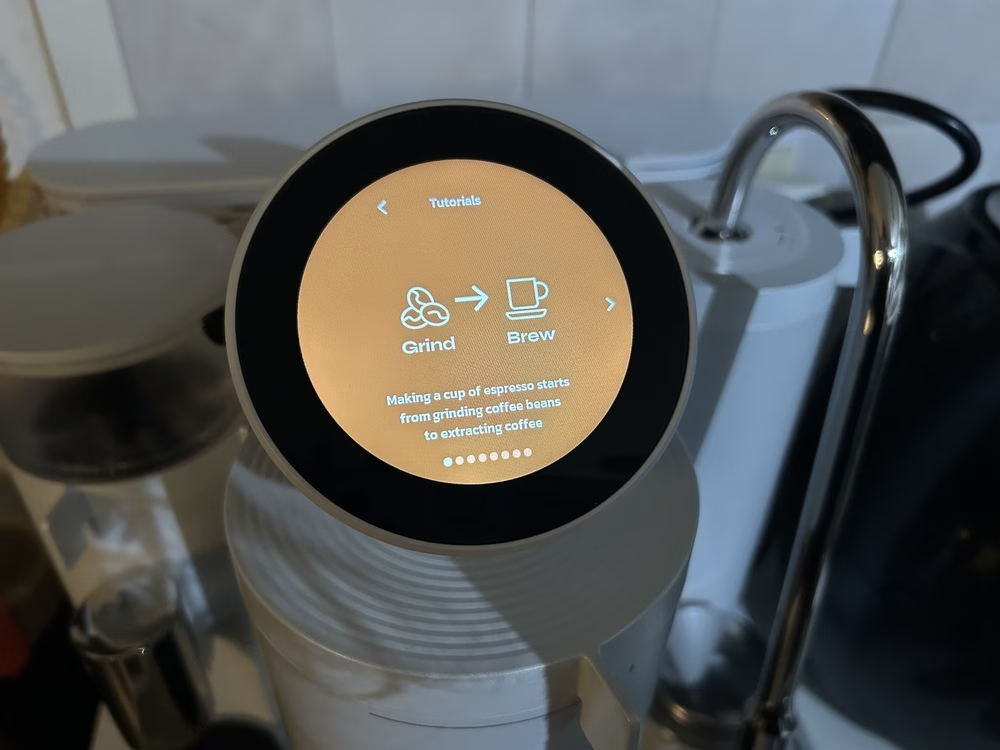

About the TIMEMORE Collaboration
One of the most exciting and talked-about features of Meraki’s home espresso machine is its coffee grinder, which was engineered in collaboration with TIMEMORE. Meraki’s product manager, Levy Lee, shares that a strong desire for quality motivated the partnership.
“Before collaborating with TIMEMORE, we had attempted to develop a grinder. During this process, we discovered that creating a grinder is far more complex than simply using two blades to chop coffee beans,“ Levy shared with Barista Magazine. “(And so), we consulted TIMEMORE: the ’leader’ in the field of coffee grinders in China. … (They) provided us with extensive technical guidance and support, and granted us access to their grinding laboratory.
“The most significant contributor in the lab was the high-precision particle analyzer, which assisted both teams in identifying the key aspects of espresso coffee,“ Levy continues. “Together, we completed the design and calibration of the burr and grinder, specifically tailored for espresso.“
Specifications + What’s in the Box
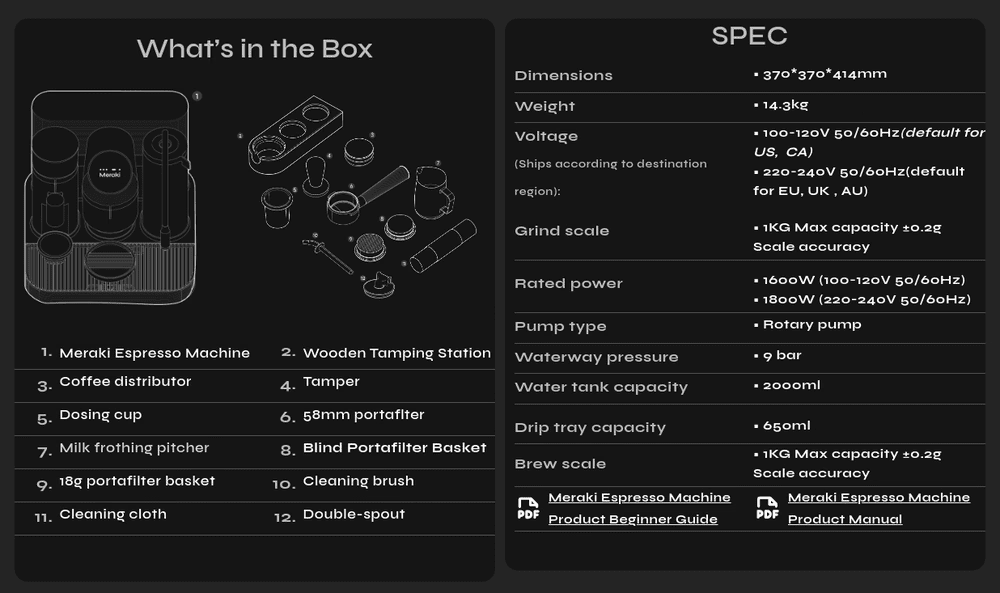

As I mentioned earlier, the Meraki espresso machine comes with pretty much everything you’ll need to get started making espresso—no need to purchase any additional gadgets. With yours, you’ll also receive a coffee distributor, dosing cup, milk frothing pitcher, tamper, and a portafilter with a double-spout, 18-gram basket, and a blind basket for cleaning. Some little extras include a wooden tamping station, cleaning brush, and a Meraki-branded cleaning cloth.
Taking up only about 15 inches of counter space, the machine itself is quite small, especially considering the amount of capabilities it has. It uses a rotary pump (bonus points for helping it run more quietly), and the refillable water tank is located at the back.
Notably, the machine promises consistent temperature control with a three-pronged approach: an independent extraction boiler, PID technology, and a dedicated group head heater. The extraction boiler ensures a continuous stream of hot water, eliminating temperature fluctuations that can impact taste. Real-time temperature feedback with PID tech allows you to dial in the perfect extraction temperature, while the dedicated group head heater maintains optimal brewing temperature at the portafilter, guaranteeing consistent results with every shot.
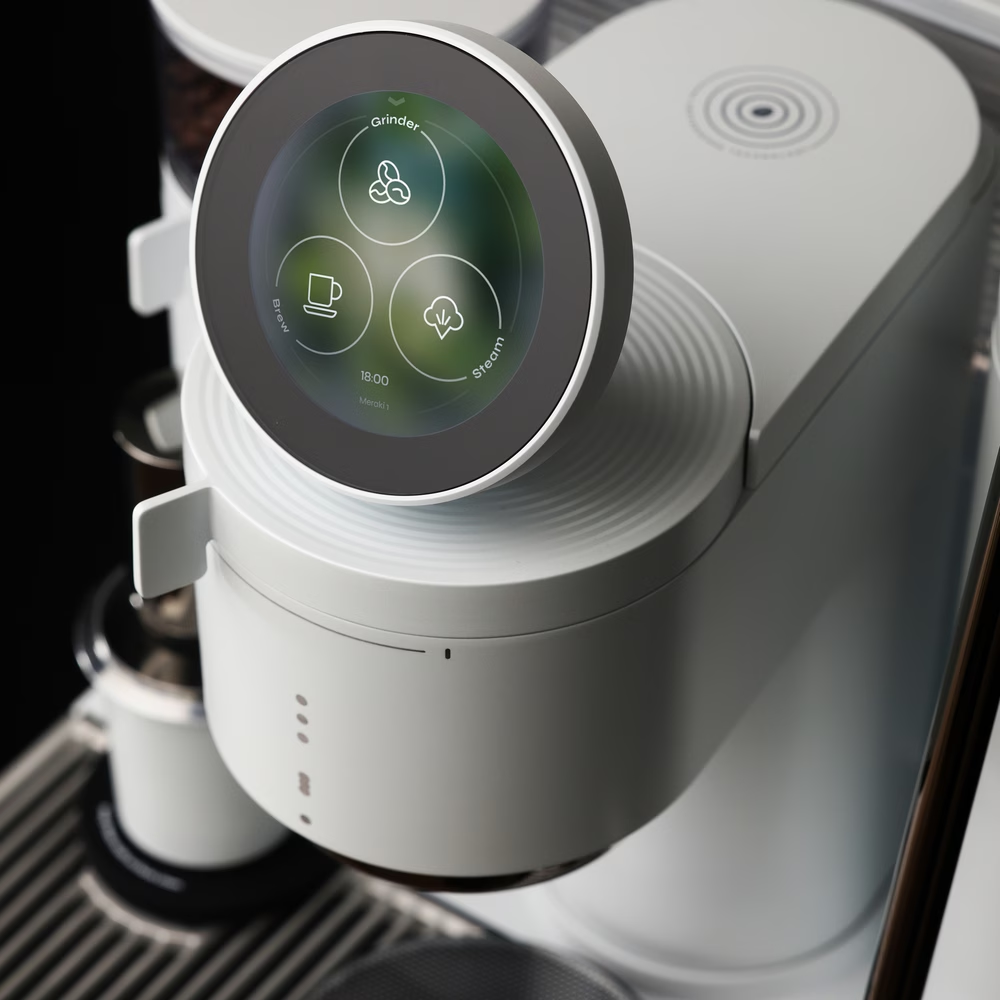

Another interesting feature of the machine is that it’s programmed with what they’ve called CoffeeSense™ technology, making use of NFCs (Near Field Communication, short-range wireless technology that allows two devices to communicate). When you purchase a CoffeeSense™ bag of coffee from Meraki’s website, you can hover the NFC chip on the bottom of the bag along the top of your espresso machine, and the machine will automatically unlock the ideal settings for brewing that particular coffee. Pretty cool, right?
The Test Drive
After learning all about Meraki’s creation, it was finally time to put it to the test. Upon opening the box and setting up the machine, my initial thought was how clean and modern, yet timeless, it looked. I appreciated its simplistic and compact design (especially since I live in a smaller space), and I also enjoyed how intuitive everything about it was—even for those without previous barista experience, I think figuring out how to brew on this machine would be pretty simple.
Once I started it up and added water to the tank, I tried grinding my coffee beans, using a light-roast Honduran coffee from Heirloom Coffee Roasters. The grinder worked smoothly and weighed out the desired weight I had inputted on the touchscreen: 18.0 grams. When setting up my portafilter, I appreciated the help of the magnetic dosing cup (which fits perfectly into the portafilter, for easy transfer of the coffee grounds) and coffee distributor in getting an even bed of coffee, and found the included tamper to work quite well. Then, it was time to make some espresso.
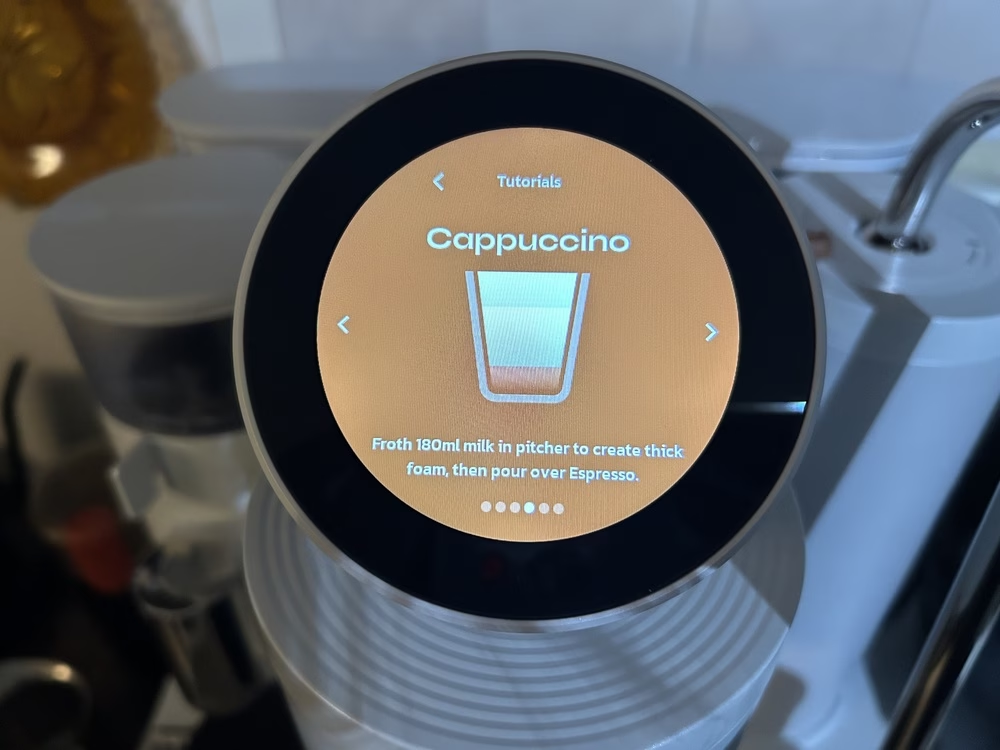

It took about two minutes for the water to heat up and for the machine to be ready to brew. When brewing the espresso, I was able to put in my desired weight: 36.0 grams. As the shot was being pulled, the touchscreen displayed a timer, showing how many seconds had passed as the shot was extracted. My initial shot came out a little fast (at just about 25 seconds), so I decided to brew another shot, this time adjusting the grind size. After making that small adjustment, my next shot came out at 32 seconds: right around what I was hoping for.
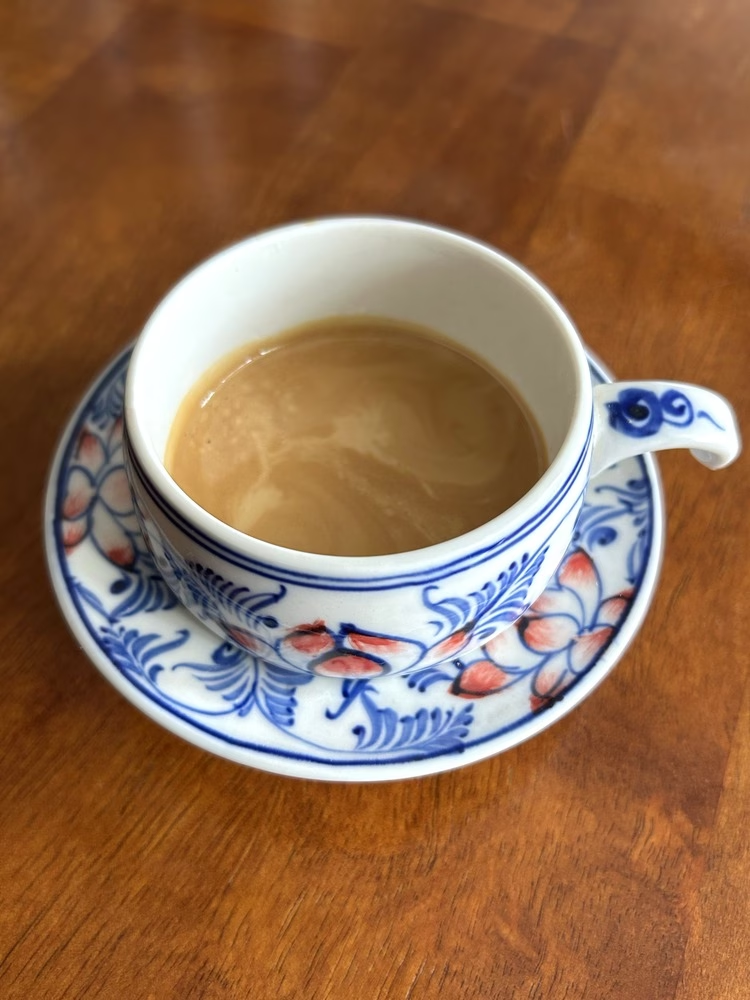

Overall, I was quite impressed with the quality of espresso that came out of the machine—it rivaled the much more expensive machines I was used to working with at my coffee jobs, creating a nice layer of crema and extracting the floral notes of the coffee. When steaming my milk, the temperature sensor was super handy, making it incredibly easy to get the perfect milk for my cappuccino. I was also impressed by how quiet the machine was.
To my surprise, I was able to brew back-to-back shots quite easily, with little time needed in between each shot, making this machine a great option for having friends over or for use in office/reception settings. Over the course of a few weeks, I had a lot of fun making flat whites, lattes, and espresso con panna.
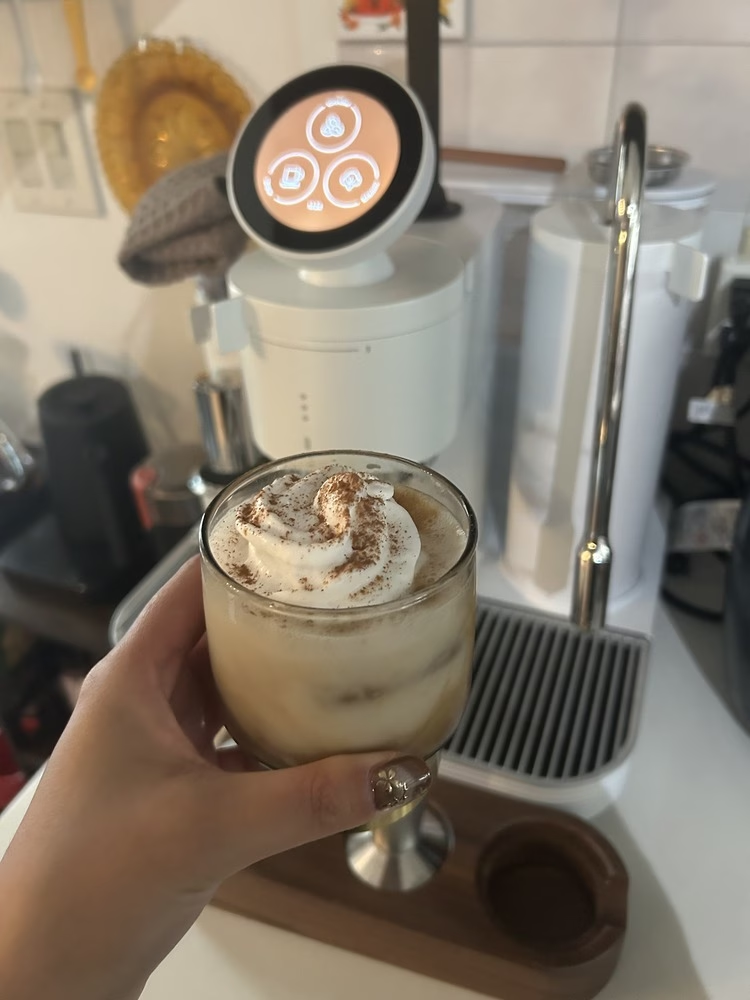

Who It’s For
Overall, the Meraki home espresso machine is an ideal option for those like myself living in smaller spaces and wanting to cut down on the amount of gear needed to make quality coffee—or, anyone who simply wants an efficient machine with a minimalistic design.
On the other hand, gear heads who like trying out different grinders, milk frothers, etc., may be better off with a different machine. But, of course, there’s always the option to jazz up your Meraki espresso routine by pairing it with your own tamper, frother, and other coffee-making tools of choice.
The home espresso machine is now available on Meraki’s website for just under $1,800 USD, and shipping is currently available for the U.S., Europe, Australia, and Canada. For the price point and the level of care that Meraki has put into making the machine, I highly recommend it—it definitely feels like it’ll be a mainstay in my at-home coffee setup, hopefully for years to come.


Subscribe and More!
As always, you can read Barista Magazine in paper or digital format. Subscribe here to get your own hardcopy of each issue delivered. Read the April + May 2025 issue for free with our digital edition.
And for more than three years’ worth of issues, visit our digital edition archives here.
Source: Barista Magazine



